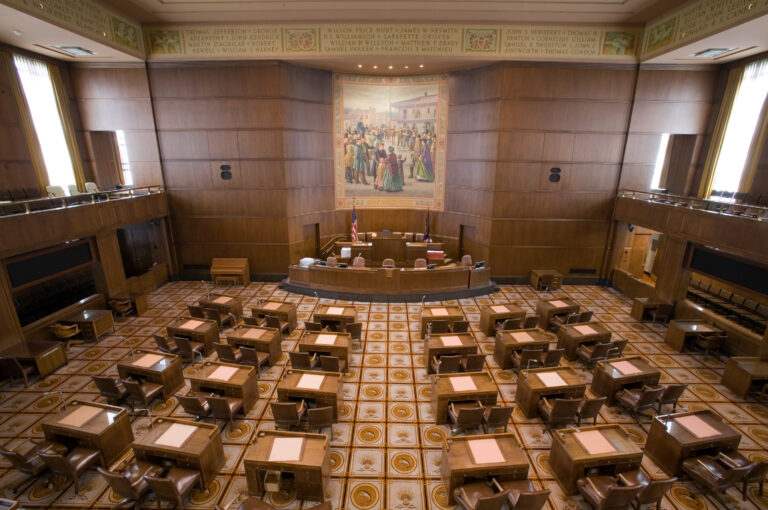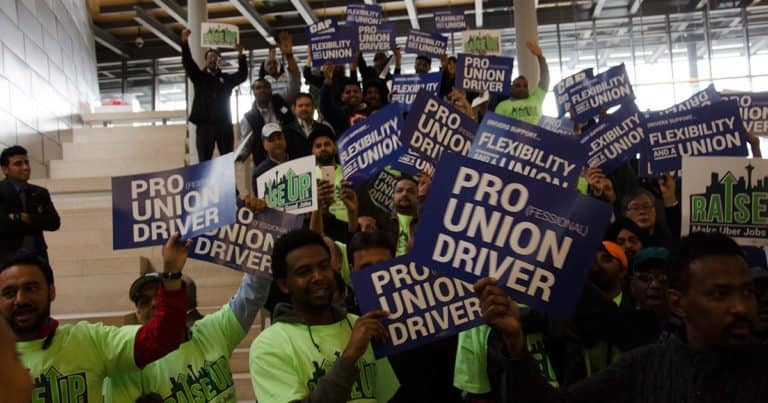What does the seemingly inevitable 5-4 decision in favor of the Friedrichs petitioners mean for the Supreme Court itself? For Linda Greenhouse of the New York Times, it could mean that Justice Scalia’s allegation of a “judicial putsch” — “a secretly plotted and suddenly executed attempt to overthrow a government” — is coming to bear. Justice Scalia levied that allegation in last year’s historic decision in Obergefell v. Hodges. But in likely overruling the Court’s decades-old precedent in Abood v. Detroit Board of Education, it is the Court’s conservative majority that is “strid[ing] recklessly into a danger zone.” After all, as Justice Breyer asked in the Friedrichs oral argument: “You start overruling things, what happens to the country thinking of us as a kind of stability in a world that is tough because it changes a lot?” Greenhouse notes that as recently as 2009, the Court relied on Abood in a unanimous opinion. What has changed since then? “It’s no secret,” says Greenhouse, “that in recent years, major segments of the Republican Party have declared open season on public employee unions — selectively, of course.” Whereas “[p]olice unions and correctional officers’ unions . . . have been exempt as targets,” it’s no surprise that “when [Friedrichs petitioners’ counsel Michael Carvin] . . . and the right-wing foundations supporting his lawsuit set out to recruit plaintiffs, they looked for teachers.” Thus, opines Greenhouse, “what we have here are the majority’s policy preferences conveniently clad in First Amendment armor.”
More on the DOL guidance regarding joint employers from the Washington Post‘s Lydia DePillis: describing the guidance as a “warning shot to clients of temp staffing agencies,” DePillis says that the DOL is making clear that it “thinks more companies should take responsibility for their contracted workforces, and it’s just told them exactly how and when.” The DOL’s action comes amidst the growing trend of companies “fracturing . . . the employment relationship, as [they] focus on their ‘core competencies’ and pay other business to do everything else.” And while “[s]ubcontracting, outsourcing, and the use of staffing agencies allows businesses to inexpensively scale up and scale down their labor needs, . . . it also adds another layer between workers and the bosses who call the shots, shielding managers from responsibility when the labor provider doesn’t follow the law.”
Tenured and nontenured faculty at the University of Minnesota may soon join the growing ranks of unionized professors. Per the Minnesota Star Tribune, labor organizers from SEIU have collected enough signatures — they needed the endorsement of at least 30% of the putative bargaining unit — to file a union election petition on behalf of approximately 2,500 UM faculty members. Should the professors vote to unionize, they “would become one of the largest faculty unions in the country.” Faculty members who support the unionization effort contend that the university’s increasing use of adjunct professors is motivating their efforts. “We need to stop this creeping reliance on contingent faculty,” said one professor. “I can develop relationships with students but can’t serve in full capacity to advise them,” said another. “It’s hard to feel respected by other colleagues because of the division [between tenured and nontenured faculty].”






Daily News & Commentary
Start your day with our roundup of the latest labor developments. See all
October 23
Ninth Circuit reaffirms Thryv remedies; unions oppose Elon Musk pay package; more federal workers protected from shutdown-related layoffs.
October 22
Broadway actors and producers reach a tentative labor agreement; workers at four major concert venues in Washington D.C. launch efforts to unionize; and Walmart pauses offers to job candidates requiring H-1B visas.
October 21
Some workers are exempt from Trump’s new $100,000 H1-B visa fee; Amazon driver alleges the EEOC violated mandate by dropping a disparate-impact investigation; Eighth Circuit revived bank employee’s First Amendment retaliation claims over school mask-mandate.
October 20
Supreme Court won't review SpaceX decision, courts uphold worker-friendly interpretation of EFAA, EEOC focuses on opioid-related discrimination.
October 19
DOL issues a new wage rule for H-2A workers, Gov. Newsom vetoes a bill that regulates employers’ use of AI, and Broadway workers and management reach a tentative deal
October 17
Third Circuit denies DOL's en banc rehearing request; Washington AG proposes legislation to protect immigrant workers; UAW files suit challenging government surveillance of non-citizen speech